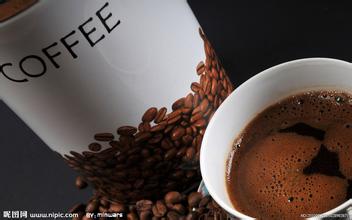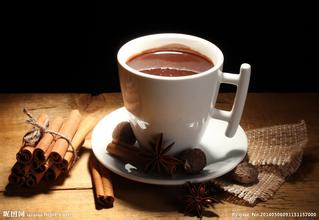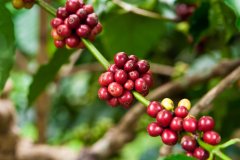How to choose the kind of coffee defective beans
Because the drying is not complete, or in the transportation, storage process is too wet, and grow cyan, white mold, sometimes make beans stick together, if not remove these moldy beans, will produce mold smell.
IV. Fermented beans
There are two main categories: one is formed by soaking coffee in the fermentation tank for too long during washing, and is contaminated by the water washing coffee beans; the other is stacked in the warehouse, thus attaching bacteria and the surface of the beans becomes mottled. Fermented beans are difficult to distinguish from the appearance, so special attention should be paid to hand selection. Fermented beans produce a rancid smell if mixed with coffee.
V. Dead beans
Dead beans.
Beans with abnormal results. The color is not easily changed by baking, so it is easy to distinguish. The taste is bland, as harmful as silver skin, and will become the source of odor.
VI. Unripe beans
green bean
Beans that are picked before they are ripe have a fishy, nauseating taste. Leaving coffee beans for years is a countermeasure against these immature beans.
VII. Shell beans
shell bean
resulting from poor drying or hybridization; beans cracked at the center line and turned inside out like shells. Shell beans will cause uneven baking and are prone to fire when baked deeply.
VIII. Worm-eaten beans
bean worm
Moth in the coffee fruit ripening red invasion eggs, larvae nibble coffee fruit growth, beans will leave traces of moth infestation. Worm-eaten beans can cause coffee to be cloudy and sometimes have a strange smell.
Nine, black beans
black beans
beans that mature early and lose their status and ferment and blacken after prolonged contact with the ground. Easy to remove by manual selection. Coffee brewed with black beans will have a rancid smell and turbidity.
X. Coco
cocoa
The reason of its formation is that the pulp remains and is not fully shelled due to natural drying method. With iodine, earth and other smells, will occur similar to ammonia odor. "Coco" means "dung" in Portugal

Important Notice :
前街咖啡 FrontStreet Coffee has moved to new addredd:
FrontStreet Coffee Address: 315,Donghua East Road,GuangZhou
Tel:020 38364473
- Prev

What kind of coffee can I recommend to Papua New Guinea AA coffee beans
Located in tropical Papua New Guinea, the climate is humid and rainy, rich in coconuts and coffee. Forests and mineral resources are also rich. Rabur is the sixth largest town in the South Pacific island nation and an important shipping hub. Its rich coffee and other goods are exported from this port. Papua New Guinea has a detached and primitive natural environment and its land is vast and fertile. Its unique volcano
- Next

An introduction to the characteristics of Manning
Manning coffee is produced in Sumatra, Indonesia, Asia, also known as Sumatran coffee. Her flavor is very rich, fragrant, bitter, mellow, with a little sweetness. Most coffee lovers drink on their own, but it is also an indispensable variety for blending coffee. The flavor is very rich, fragrant, bitter, mellow, with a little sweetness. Most coffee lovers drink on their own.
Related
- Does Rose Summer choose Blue, Green or Red? Detailed explanation of Rose Summer Coffee plots and Classification in Panamanian Jade Manor
- What is the difference between the origin, producing area, processing plant, cooperative and manor of coffee beans?
- How fine does the espresso powder fit? how to grind the espresso?
- Sca coffee roasting degree color card coffee roasting degree 8 roasting color values what do you mean?
- The practice of lattes: how to make lattes at home
- Introduction to Indonesian Fine Coffee beans-- Java Coffee producing area of Indonesian Arabica Coffee
- How much will the flavor of light and medium roasted rose summer be expressed? What baking level is rose summer suitable for?
- Introduction to the characteristics of washing, sun-drying or wet-planing coffee commonly used in Mantenin, Indonesia
- Price characteristics of Arabica Coffee Bean Starbucks introduction to Manning Coffee Bean Taste producing area Variety Manor
- What is the authentic Yega flavor? What are the flavor characteristics of the really excellent Yejasuffi coffee beans?

